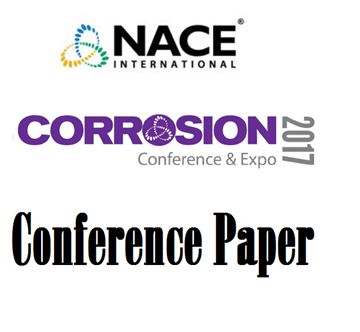Search
Conference Papers
View as
Sort by
Display
per page
Corrosion Resistance and Anodizability of Recycled Aluminum Alloys: Effect of Fe and Mn
Product Number:
51324-20679-SG
Publication Date:
2024
$40.00
Corrosion Resistance Comparison of Direct-to-Metal, Weaterable Protective Coatings
Product Number:
51220-281-SG
Publication Date:
2020
$20.00
Corrosion Resistance Evaluation Of Super Duplex Stainless Steel In Supercritical CO2 Saturated Liquid Phase Containing Impurities O2 Or SO2
Product Number:
51322-17602-SG
Publication Date:
2022
$20.00
Corrosion resistance of 13Cr-5Ni-2Mo Martensitic Stainless Steel in CO2 Environment Containing a Small amount of H2S
Product Number:
92055-SG
Publication Date:
1992
$20.00
Corrosion Resistance of AISI 316 (UNS S31600) Stainless Steel at Near Deaerated-Seawater Systems under Stagnant and Dynamic Flow Conditions
Product Number:
51323-19283-SG
Publication Date:
2023
$20.00
Corrosion Resistance of Duplex Stainless Steels for CCS Application under the Liquid Phase in Equilibrium with Supercritical CO2 Containing Slight Amount of O2
Product Number:
51324-20598-SG
Publication Date:
2024
$40.00
Corrosion Resistance Of FBE Internal Coating Pipe In High Temperature And High CO2-H2S-Cl- Environment
Product Number:
51322-17509-SG
Publication Date:
2022
$20.00
Corrosion Resistance of Large Components Produced rfom AF932N High Nitrogen Stainless Steel Ingots
Product Number:
51317--9322-SG
ISBN:
9322 2017 CP
Publication Date:
2017
$20.00
Corrosion Resistance of Lean Duplex Stainless Steels in Water Reservoir Environments
Product Number:
51319-13023-SG
Publication Date:
2019
$20.00
Corrosion Resistance Of Stainless Steel Pipelines In Seawater During Pre-Comissioning Phase
Product Number:
51323-19137-SG
Publication Date:
2023
$20.00
Corrosion Resistance Of Stainless Steels And Nickel Alloys In Natural Seawater
Product Number:
51321-16515-SG
Publication Date:
2021
$20.00
Corrosion Resistance of the Super-Austenitic Stainless Steel UNS S31266 for Geothermal Applications
Product Number:
51317--8825-SG
ISBN:
8825 2017 CP
Publication Date:
2017
$20.00














